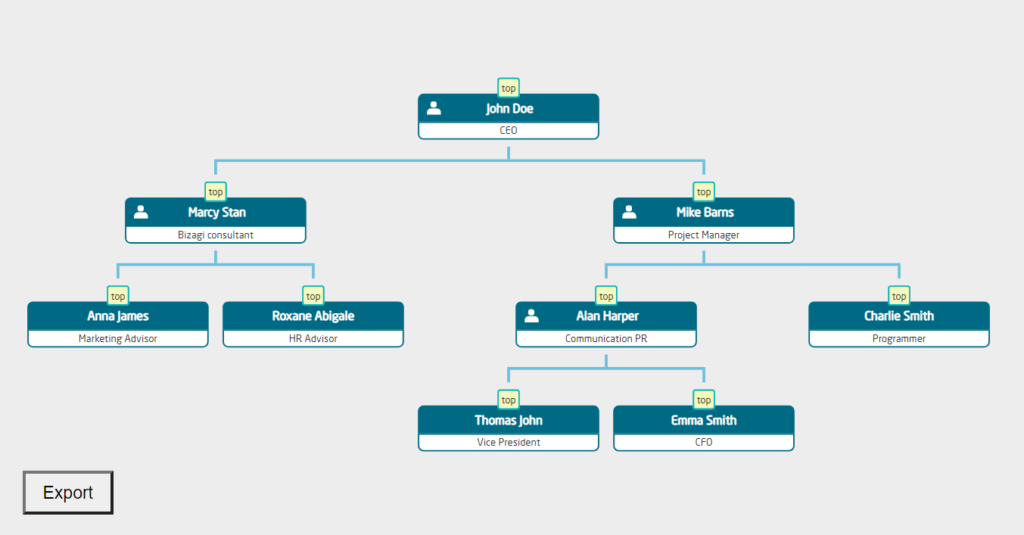Custom Bizagi widget
The widget works for all the below scenarios:
- I agree to terms and conditions…
- I accept the terms and conditions…
- I confirm…
The widget works for all the below scenarios:
Have you ever wondered what is the proper way to cancel a case in Bizagi? When I first started working as a technical BPM consultant, I learned to cancel the case using the following workflow pattern:

At the beginning of the process, you add a parallel gateway. One path takes the normal flow, while the other one goes into this cancel logic: an Intermediate event followed by a Terminate event.
The below code helps you trace the location of any uploaded document in Bizagi:
var uploadPath = CHelper.getParameterValue("uploadPath");
var IdEntity = CEntityManager.GetEntity("entity-name").Id;
var IdAttribute = CEntityManager.GetEntity("entity-name").Attributes["attribute-document-name"].Id;
var SurrogateKey = <entity-name.Id>;
var WholePart = (SurrogateKey - (SurrogateKey % 1000)) / 1000;
var bizagiFilePath = uploadPath + "\\" + IdEntity+"\\"+ WholePart +"\\"+ SurrogateKey +"\\"+ IdAttribute;An organizational chart, also known as an organigram, or organizational breakdown structure, is a diagram that displays the structure of a company and the relationships and relative ranks of its parts and positions.

Recently, I had to work on a more complex widget. The requirement was to have a custom questionnaire loaded into the Bizagi form. As you know, Bizagi doesn’t have a form control for that so I had to put my mind to building one.
The challenge came when I had to understand how the widget works with Bizagi. The documentation is not great, but with whatever I found on Bizagi’s website and the source code from all the available widgets, I managed to understand a little bit.
With this knowledge and all my JS previous experience, I cracked it.
Out of the box, Bizagi provides a wide list of UI form controls like buttons, date pickers, text boxes, and so on. Unfortunately, the list is not complete so in this case, if you need a more complex control you can build one of your own and extend the form’s functionality using Widgets.
In my situation, I needed to use a simple HTML code to separate two sections horizontally.
The Work Portal is a secure web application/portal developed by Bizagi where the business applications that have been previously designed, are presented to end-users.
By accessing the Work Portal, the business users can create new cases, work on pending activities, generate custom reports, and so on. Overall, they work with the data coming from the designed business applications.
Both elements are extensions to the BPM 2.0 standard and were introduced in Bizagi starting with version 11.0

As Bizagi defines it, Conditional activities are enabled or disabled during the course of a case instance depending upon a business condition. They represent a user task that when enabled is allocated to an end-user.
The answer is quite simple. As a Bizagi BPM Consultant/Developer you must have a way to better understand how things are managed at a database level. This can be achieved by running some custom SQL queries.
I mainly use these scripts to instantly get access to some information that otherwise is quite impossible to get from Bizagi. Also, it provides an amazing way to debug your process, check for performances issues, bottlenecks in your workflows, etc.
DocuSign is a fast, reliable, and secured way to electronically sign documents. The electronic signature service can be directly integrated with Bizagi using the custom DocuSign connector.
There are many documents associated with hiring a new employee, things like contact forms, benefits enrollment, and many more. All those documents can be filled out and signed electronically.